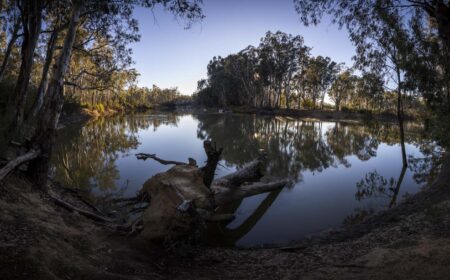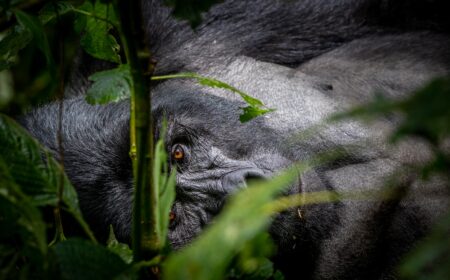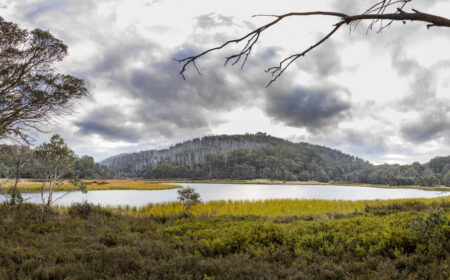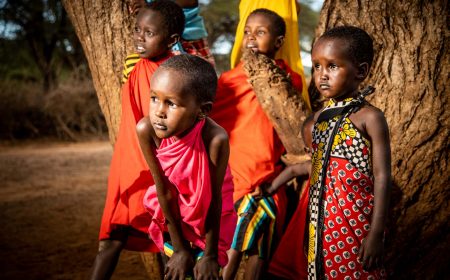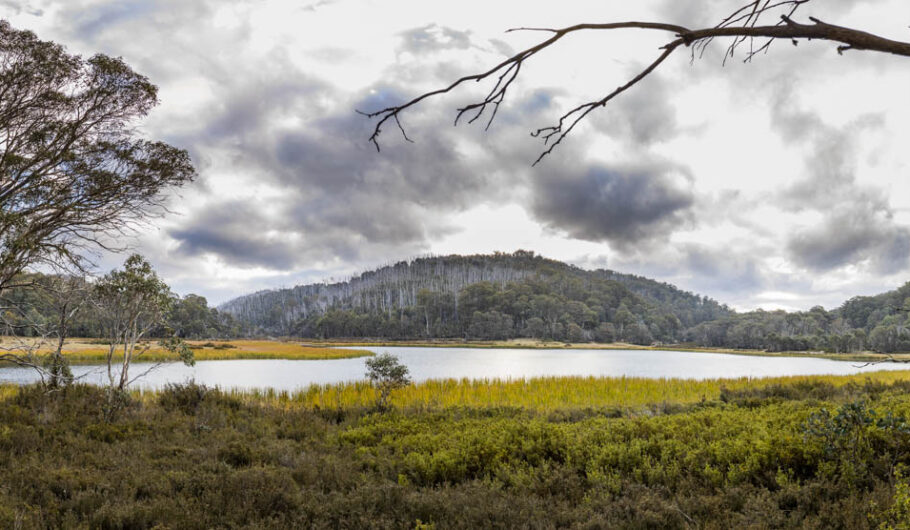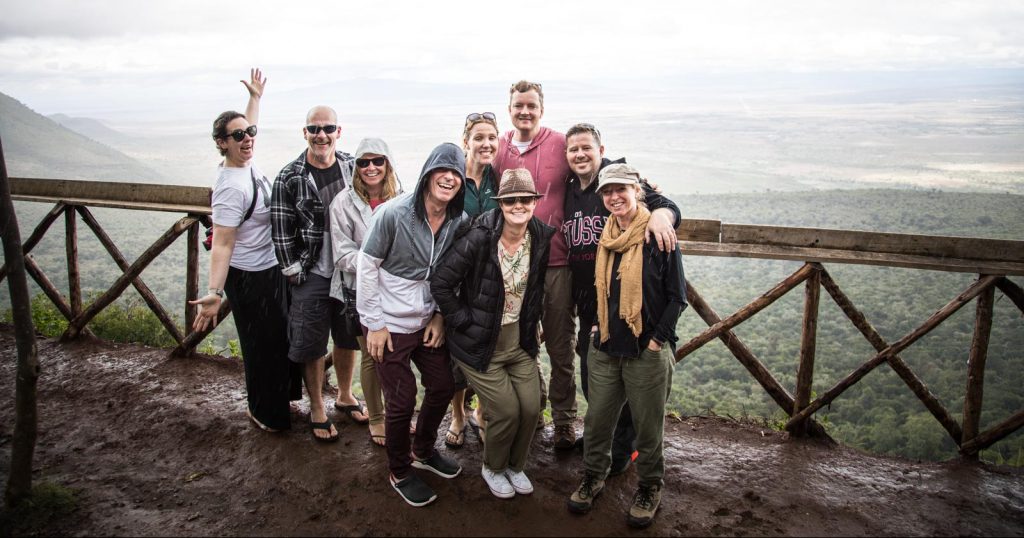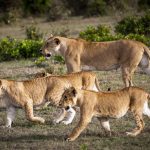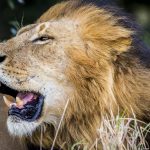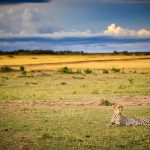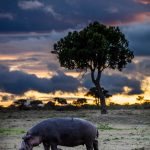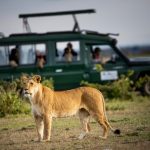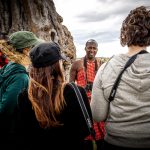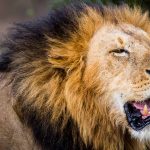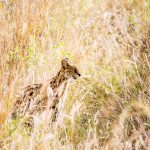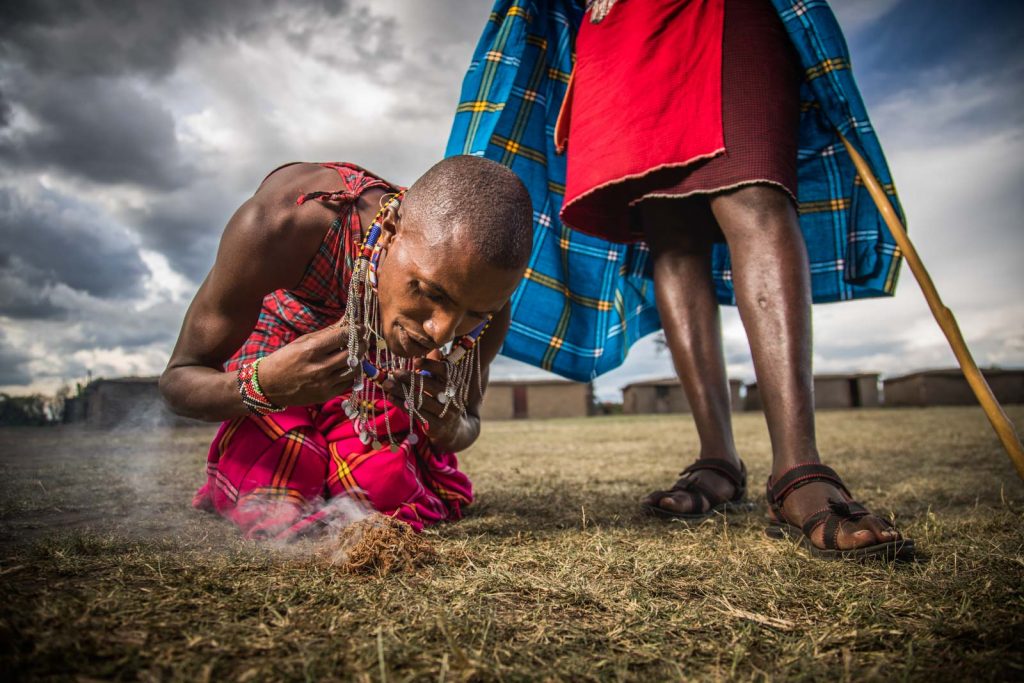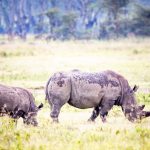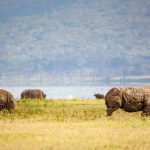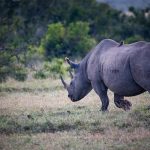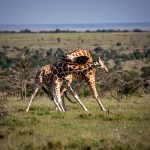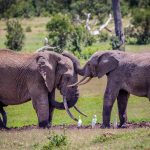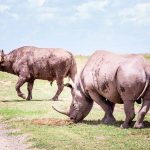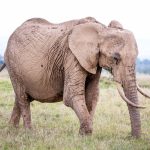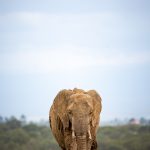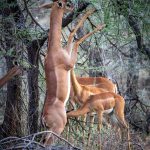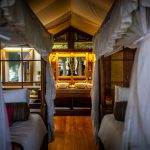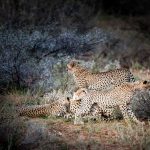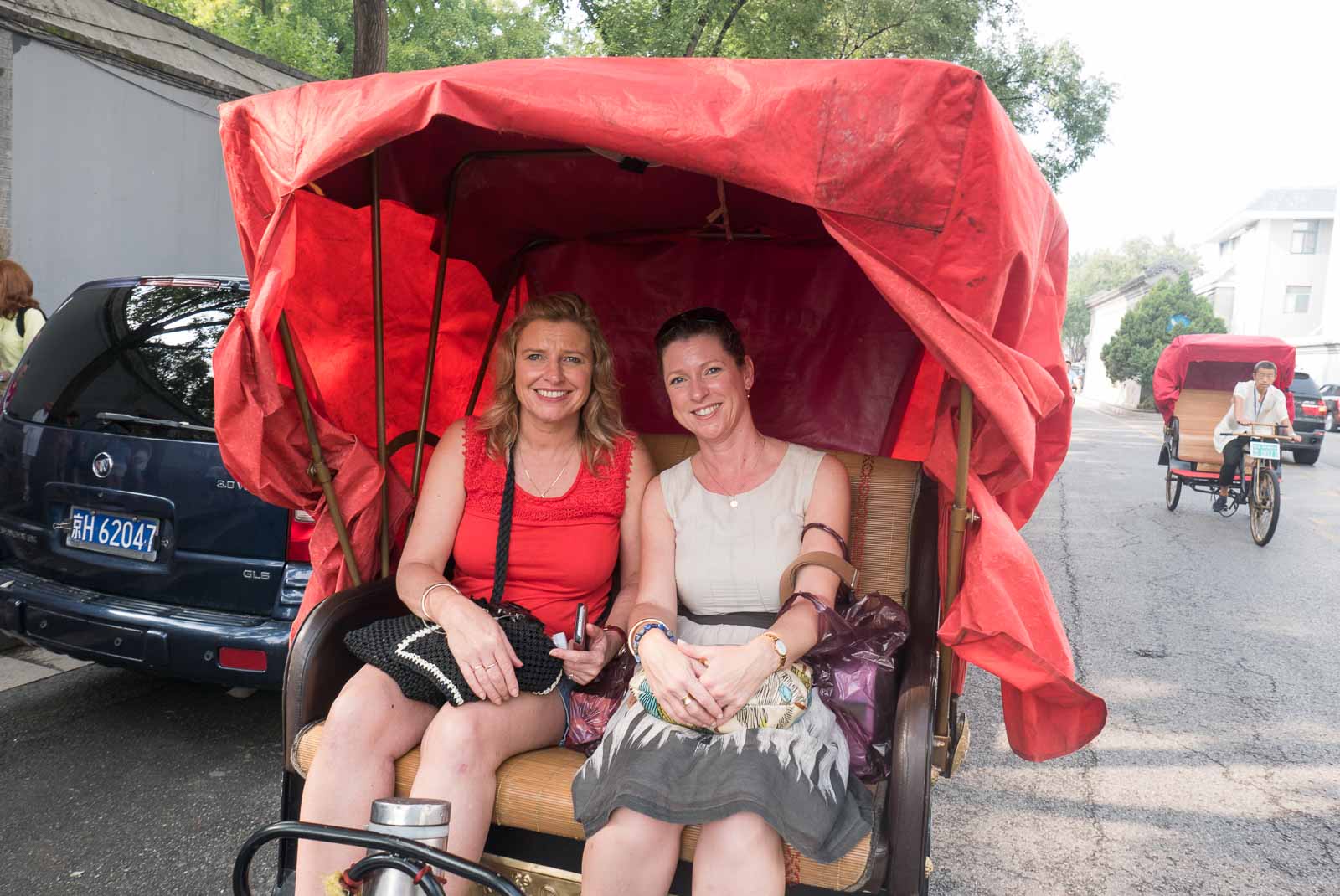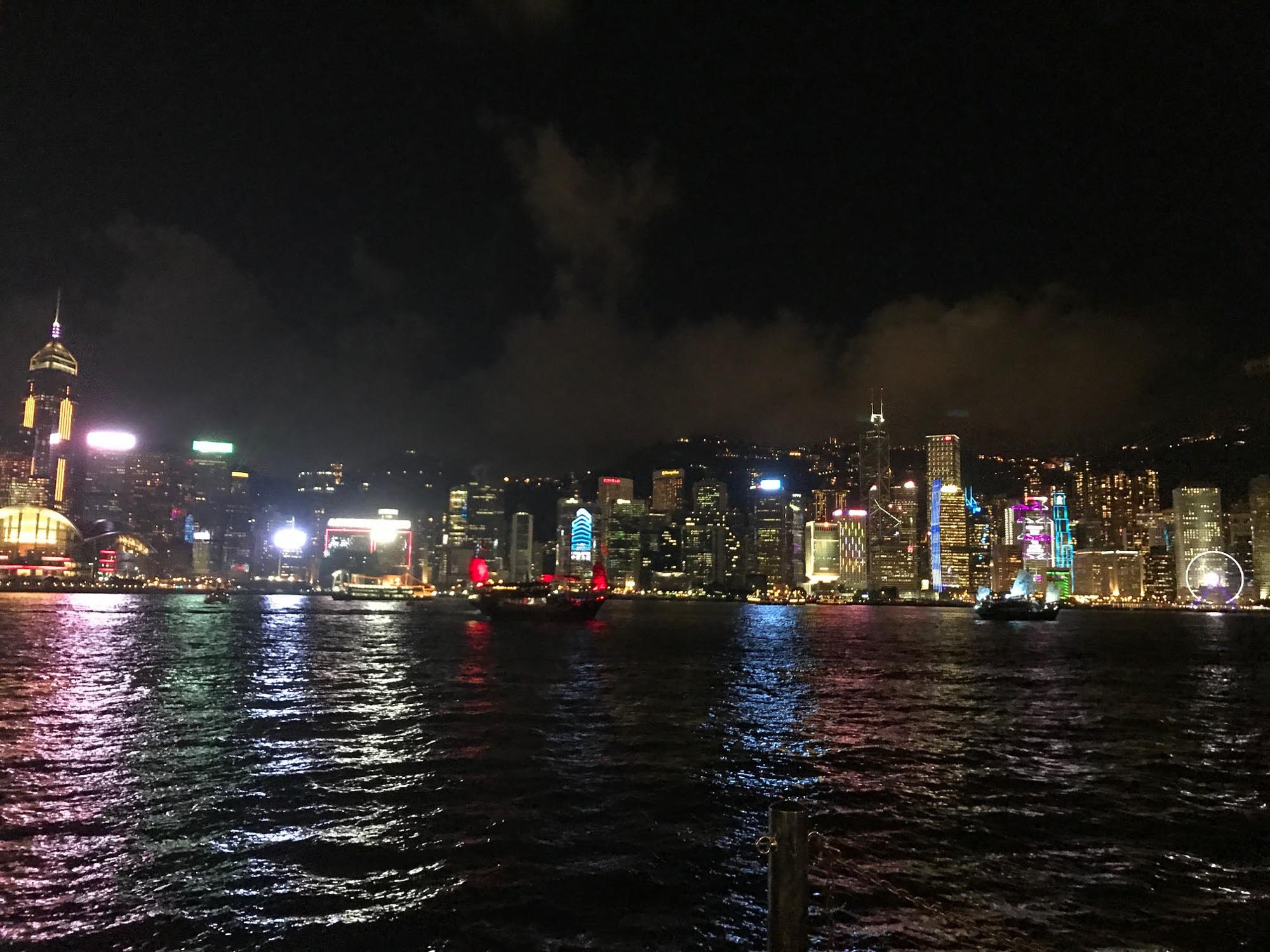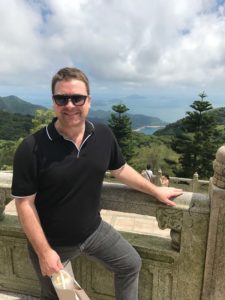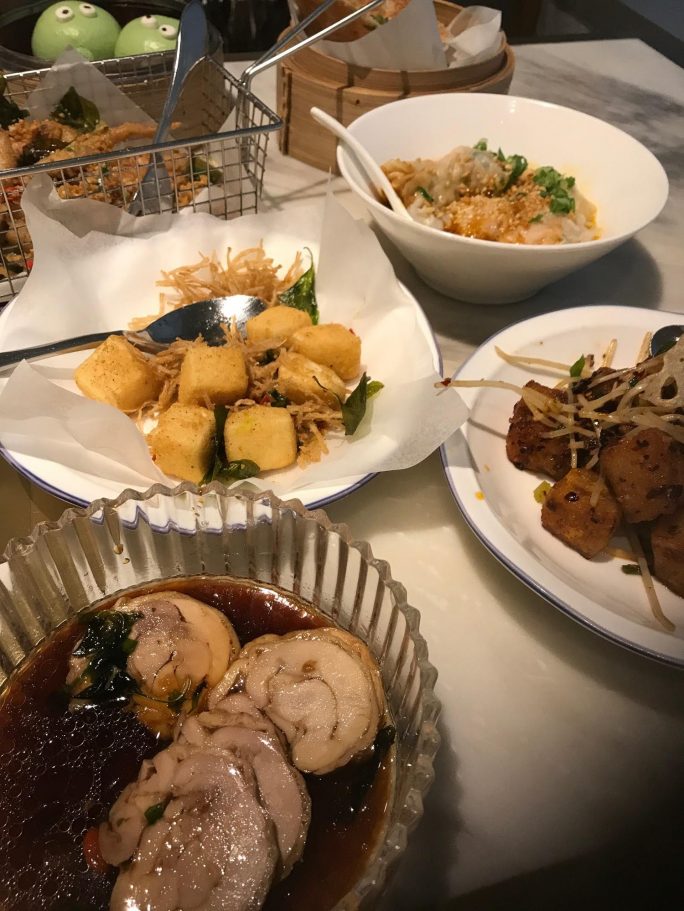Taking off on a 12-month adventure around Australia Taking off on a 12-month adventure around Australia
The first stop on our 12-month trip around Australia was at Sovereign Bend, where we overlooked the Murray River and a quaint little house on the river bank opposite whose lights began to twinkle as the sun dropped and dusk settled in around us. Where we had to cross a narrow single lane timber bridge and dodged the pot holes along a dusty track to find a spot to call home for the night.
We were the only people in the national park, just outside Koondrook, on the border between Victoria and New South Wales and more than once we asked ourselves, are we in the right place, are we allowed to camp here?
With a small fire kindling we talked about the adventure ahead us of and the enormity of living in a tiny van for the next eight months. We looked up at the mass of stars overhead and watched the flames of the campfire dance in front of us and relaxed into the life we had chosen, to explore as much of Australia as we can, to take ourselves entirely out of our comfort zone, to live in a van.

I didn’t sleep well that first night. We were on a slight incline, metres from the banks of the river. My night brain took over and I worried we would roll into the water. I was sure I could hear noises around me and got it into my head that the people in the house on the opposite bank would sneak across in the middle of the night and steal our e-bikes, which is funny really, because they had far more stuff for us to take than vice-versa. Plus, how would they get our bikes on their kayaks or tinny?
Want to know more about camping in Australia? Read about our trip to Narbethong here.
So, my overactive imagination, combined with the sound of the in-van fridge switching on and off constantly and getting used to a tiny bed (the size of a king single) in a tiny van, kept me awake throughout the night.
When I did sleep, Ade shook me awake. I was having a nightmare and was agitated and scared. In my dream I was trying to tell a guy to ‘fuck off’ but the words wouldn’t come out, almost as though I’d had a stroke. The man was following me and while he wasn’t creepy, I was agitated that I couldn’t speak.
Which is a strange way to begin an exciting adventure around Australia.
If you like this post you might also like to read about Ade’s four-wheel drive adventure through Western Australia here.
In the morning we woke up to see the sun rising over the Murray River and the terrors of the night before were soon forgotten. In their place was excitement at the adventures to come, expectation over the stunning views we’ll get to see and a growing sense of freedom at the knowledge that the only responsibility ahead of us is to stay safe and to enjoy the journey.
That and the knowledge that there will be many more sleepless nights, nervous moments on the road and a mental note to myself not to park the van downhill when camped next to a river.
We are realists after all.
Getting to the heart of Uganda
The flight from Kenya to Uganda is short, so short we’ve barely had time to enjoy the snacks provided and return our trays to the upright position before we’re touching down.
Di and Ade get stopped at Entebbe airport and grilled on the location of their drone.
“You must have one,” says the woman in security, eyeing off Ade’s ridiculously oversized camera bag.
“We don’t,” they assure her, she lets them go, eventually, but urges them to bring two next time – one for them and one for her.
We meet up with Brooke who ditched us in Kenya after that night at the bar with the blokes and Joe’s earlobes.
At Entebbe Zoo we go behind the scenes and feed the giraffes, but Ruby the Impala, decides she’s hungry and keeps pushing her nose into the bucket, we feed the chimpanzees, stroke a rhino and Ade gets attacked by an elephant.
We meet Sushi, the Dodo bird, who watches us with interest, but is more intent on nesting on Pete’s backpack than bowing to us all.
And so goes another missed photo opportunity.
While the rest of the group go on to the shops, Di and Ade and Elyse and Dave, decide there are more photos to be taken and sites to be seen and head into Entebbe Botanical gardens where we swing on the vines made famous by Tarzan, search for colobus monkeys and bats and stop for a drink in a local bar on the banks of Lake Victoria.
Our guide stops at every tree to explain its botanical name as Dave and Ade photograph every tree and every vista.
We watch as a trio of monitor lizards has a menage-a-trois on a tree branch hanging precariously over the Lake and giggle like schoolkids as they eventually tumble into the water below.
Read more: Braving the roads to shop in Kampala
The group reconvenes at a coffee shop in a nearby shopping complex where Joe tells us he’s just had the best zinger burger ever from KFC. And it’s too bad for Steve, who’s missed out and will spend the rest of the trip in search of KFC.
We go for dinner and wait hours and hours and hours for our meals to come at the European bar next to our guest house.
The owner buys us all a drink to say sorry, but strategically waits until half our group has departed before making the offer.
Diane and Julie can’t get back into the guest house. The gates are locked and they’re too short to be seen over the top by the security guard, they jump up and down and eventually get in.
At Murchison Falls we watch a boy grab hold of a gecko, right in front of a sign that says don’t touch the wildlife, take a cruise along the river where Zoe sees yet more hippos and finally admits that she might have seen enough.
Read more: Searching for lions and big happy smiles in Uganda
We walk to the falls, get sprayed by the might of the water and pray that our guide Benson is there to meet us at the end.
He is.
And we take the long drive back to meet Donna and Joe who have waited patiently for us all at the river crossing.
We get there just in time for the final barge of the day to take us across the water and watch in horror as tourists get closer and closer to the river’s edge, and a hippo family bathing just offshore.
That’s too close, even for Zoe.
Benson tells off a school teacher who has let his students get too close and we all nod along in self-righteous agreement.
Meanwhile the setting sun shoots orange and pink colours across the skyline.
Ade gets up early for a sunrise safari, but not even that satisfies his photographic lust. Steve shakes his head, hoping that this solo safari might bring an end to Ade’s constant calls of ‘stop the van’ so he can photograph yet another Kingfisher.
We finally make it to Amari Community Development Organisation where the kids perform a concert, we eat a hearty lunch and Joe entertains the students with his gimble.
We split into two groups to visit the local families and walk through the dry brush in Buliisa, drink soft drink with the families and learn a little more about life in a Ugandan village.
The first group is back early and has handed over all the sporting paraphernalia that has travelled through Kenya and from Australia and are ensconced in four different games of footy by the time the second group gets back.
Diane and Zoe try to get in on the act, but none of the kids want to play with them they so they go back to playing with the puppies instead.
Marita, the school principal, takes us on a tour showing us her new house and the kitchen that they’ve recently added to the school grounds.
Diane and Julie get emotional at being reunited with their old friends and seeing the school they have been raising funds for and spent three weeks volunteering at, once again.
Steve forces Di and Ade to walk him to his room, where he can’t quite figure out how to lock his door. Meanwhile Di and Ade bunker down in the storage room, home to bats and insects that come alive at night.
Julie and Pete adopt a young student and we all fight back the tears when it comes time to leave.
We make a short overnight stop at the Kasiisi Project where we take a tour of the school and learn some of the greatest snippets of life advice from the colourful paintings across the school walls. Sayings such as: “Life has no spare parts, avoid sex” call out to us.
The pre-schoolers sing for us, the older kids suffer through our stories and we all end up in the principal’s office.
Our homestay gives us free loose-leaf tea to take home, which excites Di. Julie tries to get romantic with Pete. Steve keeps calling for more coffee, and stops everyone else from getting any tea, which definitely does not excite Di.
Joe flashes Steve in the middle of the night, which kinda, sorta makes everything alright.
And Donna and Joe wander around in their matching dressing gowns, because they can.
We take the long trek to Queen Elizabeth National Park and find ourselves with heavenly views perched on the edge of a mountain overlooking the park.
As the rain begins to fall, again, we take a quick swim to make use of the swimming pool and to take in those views.
Seven of us trek to see the chimpanzees. Julie and Elyse use gaffer tape on the bottom of their trouser legs to protect their ankles from jumping ants, and the fashion world cries.
Ade and Dave battle the trees to photograph the chimps and Zoe struggles to stay upright along the track.
A quick stop back at the lodge to pick up the rest of the group and then we’re off on another safari. Elyse gets her fill of elephants, Zoe sees more hippos than she ever thought possible and the whole group watches as a gaggle of mongoose runs from car to car.
Yet another boat ride, slower than the first, reveals the African wildlife at its best and Ade and Dave fight to get the best photo of a hippo with its mouth open. But Ade gets distracted trying to capture just one more photo of a Kingfisher.
An early morning game drive, our last in Africa, reveals the committed game drivers as half the group elects to stay in bed and misses the final lion sighting.
The road to Kisoro is long and very, very muddy, we slide our way down the main road and reach our destination in time for dinner.
But along the way, Steve makes us all pull over; he’s lost his Apple ear buds on the couch at Queen Elizabeth. Brooke calls the lodge, no one has seen them.
We push on.
Another four-hour drive takes us eight hours. We’re on Africa time after all.
We split into two to trek for gorillas, group one is back at the lodge before group two even begins their trek. They’ve had their fill of gorilla porn, been rushed at and sat with a gorilla family for an hour.
Read more about trekking for gorillas in Uganda here.
Meanwhile group two – Di and Ade and Dave and Elyse – are still driving to get to the part of Bwindi Forest where their gorilla family is located. They pass a pygmy family, and walk, enter the forest, and walk, pass a pygmy hut and nest, and walk, have a rest mid-morning and walk. Finally, they come across a silverback hiding in the bushes. There’s no sex in this family, just an inquisitive, gorilla who spends his time watching the humans.
Back at the lodge we compare stories and photos. And marvel over the magic of spending an hour with these beautiful creatures in an African forest.
We’re back together for a visit to a local village where Donna gets to be a groom and marry Diane and Diane gets to be queen for the day. Ade takes way too many photos, again. Joe finds a new admirer, Julie looks for a gift shop and Steve pretends he desperately needs the toilet so he can get out of the walk, but jokes on him we were just about at the village when he chose to turn around and start walking back.
Steve gets us all invited to a wedding, but the rest of us go canoeing on Lake Mutanda leaving Steve to make an appearance as the only ‘Mzungu’ at the wedding.
We cross the border into Rwanda and make a quick stop at the Kigale Genocide Museum, and suddenly we all fall to earth with a thud. The reality of human nature, what one human can do to another, and history hits hard.
But nothing can replace the fun, the laughter, the memories, the wildlife and the views, the many and varied experiences that Africa has thrown our way.
It’s weaved its magic into our lives and delivered us an adventure destined to be remembered forever more as the most fantastical adventure there ever was.
Lady in the van Lady in a van at Lake Catani
We meet her in the campground.
She speaks to Ade first. They always do, with his easy smile and welcome face, they always seek him out for a chat.
“Have you been on any good walks?” she asks him.
Her voice is gravelly, with a slow drawl. A life lived in the country perhaps? Or the careful tone of a one-time casual drug user.
She’s a midwife, she tells us, just come from Swan Hill where she’s spent the past few months working.
She’s got the glistening eyes of a young woman and a smile that lights up her face. But the lines and etchings that frame her eyes and mouth tell of a life well lived, or perhaps a life of hardship.
Her striped knitted beanie and poncho were what first set her apart from our fellow campers. That, and the fact she was a woman over the age of 50, travelling in a ute on her own.
We invite her to join us by the fire, as the wind bristles around us and the temperature plummets.
“Do you ever feel nervous travelling on your own?” I ask her.
“No, not really,” she says. And then “Nope,” more emphatically.
It’s a considered response delivered without hesitation. And yet she’s travelled through India, Asia and South America on her own.
She tells us about her trips briefly, the adventures but not the details. She’s a loner, not one for superfluous words, but happy to discuss earth’s beauty and the nomadic lifestyle she’s chosen.
She takes midwifery roles in towns across Australia, she tells us, and just about everything she owns is in the back of her van.
And then she is gone, off to wander the mountain tracks that surround us and to explore the beauty in each moment.
Join us on Facebook, Instagram and Twitter for more travel chatter.
Laughing our way through Kenya on an African Adventure
Two brothers, two sisters, ten friends, four weeks, one grand adventure through Kenya and Uganda. First stop, two weeks in Kenya
It all starts at Tullamarine airport, where Donna tries to smuggle a cable through customs.
“Looks dodgy,” they say, and bar her access.
Not even her sweet smile can get her past these Melbourne security guards.
Meanwhile Ade, Di, Julie, Pete and Steve keep moving as far from Donna and Joe as they can. They push forward, past the Duty-Free section, past Hungry Jacks and past Kathmandu.
Soon enough they find themselves in a bar, of course, it was only a matter of time. Zoe turns up just in time for the first round. And meets her fellow travellers for the first time.
Diane leaves for her flight – not for her the second-class carrier Etihad, Emirates only, thank you very much.
But her flight choice comes at a cost, she’ll wander the corridors of Dubai airport alone and arrive into Kenya after the rest of her travelling companions have passed through customs in Kenya and have arrived at their home for the night.
Dave and Elyse had flown on ahead from Perth, part honeymoon part group adventure. They wanted some time to themselves, they said, before the Melbourne onslaught arrived.
Steve who had complained several times before leaving that he couldn’t sleep on a plane, falls asleep as soon as the Etihad plane leaves Tullamarine and proceeds to sleep for eight straight hours, waking long enough only to discover Julie and Pete have eaten the last lamb meal and the last of the eggs for breakfast.
In Nairobi, the group prepares for a quiet night, it’s gonna be a long drive to the Masai Mara and they’ll need to be up early.
We’re off on an adventure!
Plus, there’s the promise of elephants and giraffes first thing.
But then Brooke, our tour leader, head of Raw Africa Ecotours, and all round trouble maker, suggests a trip to a local meat bar where the main Masai dish is meat, meat, meat and a little more meat. A better option though, they all agree, than the other Masai delicacy – cow’s blood in milk.
The intrepid travellers are ushered into a side room where four tables are joined together to make one long narrow table. A carcass hangs in the window out the front and the wait staff are as bemused by their guests as the guests are by this experience of eating in a ‘Butchery’ that is also a restaurant.
There is a side dish of lettuce and a few chips, and plates full of beef.
After we’ve all had their fill and snapped selfies with the staff, photos of the kitchen and that hanging carcass, Brooke sends the women home.
She takes the men to a local pub.
While Dave and Steve clean up on the pool table, Joe gets out his earlobes – apparently they are sexy in Kenya. Medium simply can’t get enough of them and begs him to stay in ‘Wi-Fi corner’. Steve helpfully hands her Joe’s mobile so she can stay in touch with Joe while he travels through Africa and so the rest of us can have a good laugh.
Come morning we’re ready for our first African adventure and our first wildlife encounter. Our first stop is the David Sheldrick Elephant Orphanage where we line up with hundreds of tourists inching forward to see elephant calves at play.
They don’t disappoint, we position ourselves along the ropes, Elyse squeals with delight as the first of the baby elephants make their way down the path and into the arena before us. When the baby bottles come out, so too do the cameras and we watch the babies wrestle, tussle, eat, drink and play as a Kenyan voice explains the life cycle of an elephant and the work of the elephant orphanage.
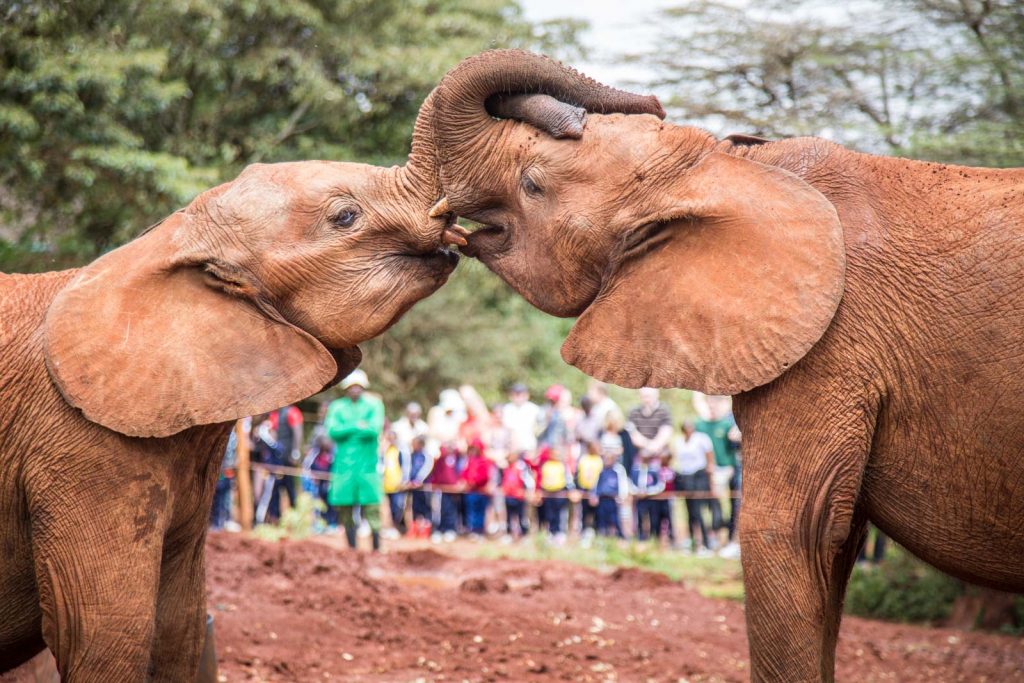
While the rest of us make a beeline for the giftshop madly searching for stuff to buy, Dave and Elyse adopt their own little elephant orphan.
Our next stop is the Giraffe Centre, where we learn about the conservation work of the centre, the life cycle of giraffes, Diane squeals with delight at getting a “kiss” from a giraffe and Steve almost gets knocked out by a giant giraffe tongue.
We take it in turns to feed the giraffes but Donna, who we soon learn does everything her own way, empties the bag of pellets into her hand ready to give them all at once to her lucky giraffe.
“One by one, one by one,” our guide cries.
We eventually get Joe’s earlobes out of Nairobi and make our way to the Masai Mara. Along the way we soon discover that Steve will stop to speak with anyone he can – armed guards, shopkeepers, children, military…
But the real surprise comes when, in the middle of Africa, we discover that what he really wants to know about this part of the world is what the prisons are like and where the prostitutes hang out.
Julie tries to get us all interested in a game, because the witty conversation and exotic views out the window just aren’t enough, but Donna gives her a withering look, there’ll be no made up games on this tour.
We reach the Maasai Mara and Zoe begins screeching, it doesn’t stop for three days as every five minutes John and Jaros find a hippo or two for us to photograph.
Ade and Dave pull out their cameras, competing to see who has the bigger lens, who will use it better and who can take the most photos. But Donna and Elyse have them both covered, if only they could work out how to use their Nikon superzooms.
The wildlife comes out to play in the Mara. Our first lions are lying in the scrub on the opposite side of the Mara River, two adolescent males under one tree and one under a second tree. But we would soon come to expect more, if you’re not moving, entertaining us, we’re not interested.
Read about that time we were surrounded by lions in the Masai Mara here.
We spy a large adult male lion by a river, a cheetah lazing in the plains and a leopard up a tree and watch as it gracefully ambles down the tree and across the river.
As we tick the Big 5 off our bucket list and watch the sunsets shoot colours across the sky, we bounce around in the back of our vans, getting our eyes used to searching the scrub for signs of animal life.
We stop for lunch in the middle of the national park and wonder, how do the wildlife know to leave us alone in this particular spot?
We pull over for bush toilets and wonder, how do the wildlife know to leave us alone in this particular spot?
We spy brightly coloured starlings and as Pete comments on their beauty and that we don’t have starlings like that at home, Julie pipes up with “our Rosellas are that bright”.
Pete says, “I wasn’t talking about rosellas, I was talking about starlings.”
“But our Rosellas are that bright,” Julie persists.
Pete shakes his head and we all move on.
Our mornings at Tangulia lodge begin with a cup of tea or coffee and biscuits, always biscuits, but Pete can’t quite work out whether his coffee is being delivered to tent six or at 10 to 6.
It’s not all wildlife, though, in the Masai Mara. Jaros takes us to visit a local village where Dave and Joe prove their jumping prowess, Ade and Pete fail to make fire and Steve scares all the kids with the drawings all over his arms.
Pete, not to be deterred by his lack of fire-lighting skills buys a set of fire sticks and Julie literally takes the Masai blanket off the chief’s back.
Jaros takes us for a morning walk, but the animals didn’t get the early morning wakeup call and only the giraffes and the dik diks come out to play.
Oh, there are signs of rhinos, of course, the unmistakable dropping signalling their presence, somewhere out there.
At night we hear the buffaloes and the zebras lolling in the wetlands just outside our resort. The droppings left on the pathways near our cabins make it clear why we need to be escorted to our rooms at the end of every day.
Reluctantly we leave Tangulia and head to Lake Nakuru in search of rhinos and flamingos.
But something’s not right. We pull over. One of the cars has a flat tyre and we need to change it. The Duncan brothers offer their advice, Joe pulls out the gimbal, meanwhile a crowd of students gathers at a safe distance, watching the ‘mzungus’ – white people – working.
Julie and Diane try to engage the kids in conversation, taking selfies and teaching them songs in a key no one knew existed.
The wheel is changed and as the vans drive off the students yell “Goodbye Julie”.
At Lake Nakaru we take separate vans, the girls chatting away in Jaro’s van, the boys stone silent in John’s.
We’re up early for a morning drive, but get there too early, before the staff have even arrived for their shift, so take photos from the carpark, while Steve calls out for coffee and Jaros looks for someone to pay our park fees to.
Inside the park it’s slow going, we see a family of baboons playing beside the road and an even bigger family camped in the middle of the road. Just try moving that group aside.
We see pelicans and flamingos gracing the mirror-like surface of the lake.
Read more about the beautiful flamingoes of Lake Nakaru here.

And then, off in the distance we spy a rhino.
As the girls follow the boys’ van they suddenly take a detour, Jaros waits while the girls all wonder what they’re up to. The girls toss up whether to head off on their own to the rhinos but decide to follow the boys and soon see the two rhinos they’ve spotted.
Pete squeals with delight – or maybe that’s just the story the girls tell themselves when they see the satisfied grin spreading across his face.
Dave and Ade take way too many photos, while Diane asks Jaros way too many questions about the life cycle and behavioural habits of a rhino.
We stop for lunch, Jaros strategically places the van to set up a women’s toilet, but the ‘business’ side is too slippery to be useful.
We find a better spot and send John with his van to create a barrier. Opting for breakfast first is a rookie error that we soon live to regret as van after van pulls up to photograph the flamingos.
Diane tries to move on some Chinese tourists who are in sight of the new toilet spot by telling them “the photos are better over there” but while two leave, two refuse to budge, they’re determined to photograph that spot from every angle.
Much like Dave and Ade would.
From Lake Nakuru we take the long drive to Sweetwaters at Ol Pejeta Conservancy.
We take a wrong turn and pull over to ask for directions. Steve wanders over to the “girls’ van” to ask if we’ve got the cups. They want a drink of rum, but as he starts to walk away, cups in hand, we call him back, we’ve got the rum in our van as well.
And as we take off across the bumpy dirt African roads the girls watch in horror as John’s van fishtails its way along the road in front of us, and then laugh imagining the boys trying to pour and drink their rum as the van bounces over that road.
We finally get to Ol Pejeta and a herd of about 20 elephants is there to greet us. Silhouetted against the sunset, the elephants watch over us from the rise that surrounds the grounds.
Diane and Donna do an anti-rain dance, but in the days to come, as the rains fall in abundance everywhere we travel, and the locals tell us the rains don’t usually arrive until November, a good month later, we soon realise something must have got lost in translation and the Gods only heard “rain dance”.
We arrive at Sweetwaters just in time for dinner and prepare for an early morning drive the following morning. We go in search of rhinos, and find the rhino graveyard, where tombstones tell sad tales of the rhinos that have been killed for their prized horns.
We see rhinos, giraffes, buffalo, zebras.
We sit and watch as two giraffes attack each other, using the full power of their long necks to strike each blow.
But John wants to get back for breakfast, so we move on.
Read about the time we were charged by a rhino in Kenya here.
From Ol Pejeta, we make our way to Ngare Ndare Forest, where we’ll spend two nights immersed in the forest surrounded by wildlife.
John and Jaros tell us there are lions and there aren’t lions, there are leopards and there aren’t leopards, which leaves us feeling a little uncertain about what we might find in the forest and how safe we will actually be.
One thing’s for sure, there are baboons. And we hear them screeching all through the night just behind our tents.
Luckily there are two rangers stationed nearby to keep us safe. We just hope they can’t see into our makeshift showers.
The tents are up when we arrive and there’s tea, coffee and ginger biscuits laid out for us. Now, this is camping, we think. And when the hot water bottles come out our camping experience reaches new heights.
With an eye out for elephants and hyenas, and an eye on the clouds threatening a downpour we spend the night sitting around the open fire. We become experts at moving the chairs to our “balconies” where we watch the “rains down in Africa”.
We take a long hike to the sparkling blue river and waterfall, but when we get there the water is muddy brown, the rains have literally pushed the surrounding mud into the water making it dirtier than the Yarra River. We take the trek to the edge of the waterfall, picking our way across the rocks, and sliding down walls.
Julie and Donna decide Diane isn’t dirty enough, so attack her legs with a mud-tipped stick. Zoe proves that while she’s strong and athletic, she’s not particularly good at balancing as she ends up on her backside, yet again.
We make it across the river and back again.
Meanwhile Steve has spent the morning bonding with John and four-wheel driving through the forest. They promised they would come and meet us at the falls, but never turn up. Tracks at the bottom of the steep muddy hill, that same hill that bested Zoe, show us the tale of their failed attempts to join us.
When nightfall comes so does the rain and we sit under our tent canopies, trying to stay dry. Elyse gets stuck in the toilet, but Dave takes Ade’s plastic poncho and rescues her. Zoe gets stuck into the limoncello and Julie tries once again to strike up a game.
Our cooks bring dinner to our tents while we all wait for the rain to pass slurping some of the best soup we’ve ever had.
When the rain passes we move back to the open fire and Julie entertains us with her dancing, after trying, and almost succeeding, to organise yet another game.
The tree top canopy walk beckons. Steve’s already done it, so knows what to expect, despite this and despite his fear of heights he heads up the tower in front of Ade and Joe.
One of them rocks the ropes, sending Steve’s fear levels up. He blames Ade, over and over, but soon realises Joe, who looks so focused on his gimbal action, is actually rocking the walkway. Steve tells them off, again, and teaches us all how to walk gently across the treetop chicken wire walkway “like you’re robbing a house, little steps, little steps” he whispers.

All that rain means we can’t go to Il Ngwesi, so we detour via Samburu for the night. We arrive just in time to listen to a cultural talk on the local warriors and to see their colourful dress.
At Samburu Ade and Dave find a new batch of wildlife to photograph, Grevy zebras, gerenuks and reticulated giraffes…
We get stranded for the morning while we wait for the water to subside and watch monkeys jump around the dining area in search of food.
Eventually we hear that the water has subsided and we should be able to get through, so we make our way to our next stop.
The drive is slow going, the roads are still wet and as we search for yet more wildlife John slides the car and gets bogged on the side of the road, Jaros uses his van to push us out and we all thank our lucky stars it wasn’t any worse.
We take four hours to make the two-hour trip to Il Ngwesi as Ade calls for a stop every time a branch moves.
And Steve yells, “not another bird! Don’t let him photograph any more birds”.
When we reach Il Ngwesi conservancy John and Jaros accelerate through the grounds, trying to cross the river before it rains again, they say.

We come to a river, Jaros crosses, John’s car follows, but gets stuck before the back wheels have even hit water. As snatch straps are attached to connect the two cars, those in Jaros’ car set up a makeshift media pack on the other side of the river – cameras at the ready.
John gently eases across the river with the help of Jaros and that snatch strap.
The crossing is a success, we take off again thinking we’re through the worst of it. Wondering why we’re still in such a rush if we’ve made it across the river.
But then another river blocks the road in front of us. Jaros gets out so we all get out. It looks deep and is moving quickly. There’s nowhere else to cross. Jaros assures us the water is subsiding and keeps suggesting “we go”.
Di keeps saying no.
So, we go.
Jaros takes off but he’s gone to the left and before he reaches the opposite riverbank his wheels get bogged.
Pete asks for the 80th time, “why didn’t he go right?”
Jaros accelerates and the back end of the car drops another foot. Elyse yells “lift everything off the floor”, Zoe screams as water seeps in.
Pete shakes his head and asks again “why did he go left?”
Diane tells anyone who will listen, “we shouldn’t have gone”.
Another vehicle turns up. The staff from Il Ngwesi pile out of the safari truck and help push Jaros out of the river before walking us all through the still rapidly moving waters.
Just take what you need, they say. So, Diane takes her handbag, her backpack and anything else she can carry.
Paradise awaits us at the lodge. Dave and Elyse stay in the honeymoon suite fit for royalty – well Kate and Wills anyway. Donna sits on the toilet – to park her backside on the throne formerly used by a Prince and Princess.
Steve wants to put on his go pro to get some underwater shots in the swimming pool, but Diane responds with what are you filming under there? And forbids all go pros from the water.
At night we head out on an impromptu safari and sundowners in the African savannah. As Fred opens the bar, by pulling down the grill on the front of his four-wheel drive, Dave and Elyse discuss the next purchase/alteration to their own four-wheel drive and Diane decides now is a good time to go back on the alcohol. It doesn’t stick, one sip in and she tips the cup into Julie’s wine glass.
Steve, who has made the front seat of John’s four-wheel drive his own, calls on Adrian’s medical expertise. The belt buckle has caused some kind of sore on the back of his leg and he needs Ade to take a look.
It’s just under his ass cheek.
They chat with the Il Ngwesi staff, with Jaros, all trying to figure out what it could be and how to deal with it.
Ade’s pretty sure it’s a boil.
He gets a pin from Steve’s first aid kit and on a bed overlooking the plains of the Il Ngwesi savannah he crouches over Steve’s ass, with Pete providing moral support and a glass of rum for them all.
In walks housekeeping ready to change the bed, but she beats a hasty retreat when Steve’s ass comes into view.
The boil is lanced, the three men are scarred, and the rest of us have a good laugh.
Pete finally gets his wish to walk with the rhinos as Ade and Dave take way too many photos and Diane worries that they’ll all be charged. Elyse calls for yet another pic of her and Dave and Zoe laments the lack of hippos.
Elyse too is wondering where all the elephants have gone but gets her fill after Jaros races against time, and one huge traffic jam to get her and Dave to the David Sheldrick elephant sanctuary so they can play with the elephant they’ve adopted.
And so ends the first leg of our grand African adventure.
But not the end of our adventure.
After figuring out how we’re going to pack all the things Steve and Julie have purchased throughout Kenya across our luggage, and with Zoe cradling a beaded mirror, we make our way back to Nairobi airport.
Uganda awaits.
As we sit for coffee in the airport lounge, Steve looks into taking a flight home and finally acknowledges that maybe Di does actually work harder than he suspects.
Julie wanders into every shop, searching in vain for something, anything to buy.
Di finally gets to sit next to Ade on the one-hour flight between Kenya and Uganda as Steve finds a row of three to stretch out in.
We co-designed this tour and travelled with RAW Africa Eco-Tours.
How to pack for your next overseas adventure
A little while ago I posted on social media recommending people start a packing list at least a week in advance, to which my mum responded “a week? I start well before that!”
It got me thinking about how we pack and how we decide what to take when travelling to far away destinations with unknown climates. And as the world prepares to hit the tourist trail again, post Covid-19, we all want answers to that very important question – what do I pack when travelling overseas?
One of my most challenging packing missions was for a trip that took in Kenya, Uganda, a cruise in the South of France, Norway and Finland -from the equator to the north pole, from trekking through an African jungle to cruising up a river through France. Part tour hosting work, part trekking, there was a bit of every kind of activity and every kind of weather condition imaginable. Oh, and did I mention we had weight limitations for internal flights?
Packing can be fraught with indecision and confusion. You want to look stylish, but you want to be comfortable. You don’t want to be too hot or too cold and, of course, you only have limited space, so your clothes need to work overtime.
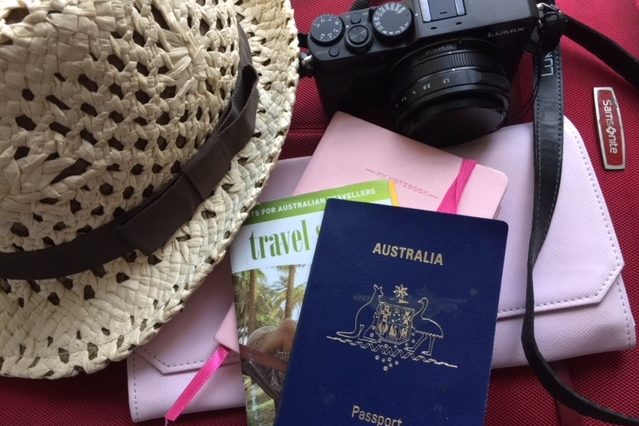
And you don’t want to spend all your time in the Laundromat cleaning clothes when you could be out seeing amazing sites and experiencing local culture.
So how do you create a list and pack for a trip overseas?
I like to start thinking early about what I might want to take. I also have a standard packing list of all the essentials in the notes app on my phone so that when it comes to packing for an upcoming trip I’ve already got a good start. I add and subtract from this list while I’m away, so it’s constantly evolving.
But as each destination is different, the actual items I take vary from trip to trip.

Here are just a few tips that may help make packing for your next trip a little easier:
- Add your destination to your weather app a few weeks before you go so you’ll know what the weather will actually be like when you get there. I check in a few times just to see how the weather is changing.
- Review your itinerary for the specific activities you’ll be taking part in – is there special equipment that you’ll need? Snow boots if you’re going to the snow, reef shoes if you’ll be in the water? Fancy attire if you’re cruising?
- Can you group the different activities that will require similar types of outfits?
- How many times will you be doing each activity? I.e. are there any special dinners and if so, how many? Will you be visiting farms, climbing mountains, trekking around ruins or swimming every day? This is important because it will get you thinking about the primary activities you’ll be undertaking and therefore the kinds of clothes you’ll be wearing the most. If 40% of the time you’ll be trekking through jungles, 10% you’ll be eating fancy dinners and 50% you’ll be in galleries you know to pack more city gear than walking clothes.
- I have heard of people who look at images from specific tours or destinations that they are travelling to so they can see what others are wearing. Far from being just about wanting to ‘fit in’ this can also help you know what the climate actually feels like – we all know that 25 degrees in one country can feel far different in another country – or even part of the same country – depending on the intensity of the sun, altitude, climatic region and so on.
- Lay your clothes out at least a week before you go. This helps ensure none of the clothes you want to take are in the laundry basket – no one wants to be washing and drying clothes the night before a flight. But I also do this so I can see how well my clothes go together. I lay everything out by clothes type. If I’ve got a top that only goes with one other item, I remove it and add something that is more versatile.
- I also lay out any equipment and toiletries I plan to take – camera gear, laptop, that way I can see how much I’m actually taking and can make sure I don’t forget chargers or power adapters.
- Don’t pack too much. Don’t think you have to fill the space in your suitcase. You might want to buy items from your destination, i.e. local mementoes or even new clothes. And remember, you’ll often have to move your case around yourself – you don’t want to struggle lifting it on and off the conveyor belt at the airport. Laying it all out before you pack can help ensure you don’t just randomly throw items into your suitcase until it’s full.
- If you’re still unsure, ask your tour operator, friends or family, often they will have recommended packing lists for particular destinations.
Want more travel packing inspiration, check out our post on things to take on your next trip here.
From leeches to rare cockatoos – camping in Narbethong
We’re not really what you’d call campers, Ade and I.
Last time we went camping was to Eden with a group of friends. All we had was a little four-person dome tent, a blow-up mattress and two sleeping bags. Oh, and two fold-up camp chairs that were just about to fall apart. (One of them was in such a sorry state of disrepair it didn’t actually make it home.)
Luckily for us our friends had everything. Camp kitchens, sinks, lights, a gazebo, fold up food cupboards, tables and chairs…
But then coronavirus hit.
And our plans for an international adventure, aka the Middle Aged and Irresponsible Tour – MAIT – were suddenly on hold.
Time for plan B.
We bought a van. A Mitsubishi Delica all decked out and ready for adventures.
And suddenly our camping game has gone into overdrive. Truly, the Delica comes with everything, a movie screen, yep, projector, tick, soundbar, sure does, tub chairs, BBQ, oven, fridge, its own tent, tick, tick, tick, tick, tick. All this AND the kitchen sink.
So mid-June, between forced lockdowns and with a Melbourne winter approaching, we set off on an exploratory adventure. Our first camping trip in the new van.
In true Di and Ade fashion we leave late. As dusk is falling, we make our way through Coldstream where an earlier car accident combined with the ensuing long weekend leave traffic crawling through the outer suburban town.
We edge our way forward, through Healesville and onto the Black Spur, where the towering trees hugging the roadside filter out the lowering sun. We hug the road too, as we wind our way through one of the most beautiful road trips in Victoria.
I’m in charge of the music, while Ade drives, but the views are such that I have to keep sticking my phone out the window to film the passing imagery, disrupting the music at least every 10 minutes and frustrating Ade.
As we pass the Black Spur Inn the Winter evening is settling in and as the sun drops a light mist is leaving a blanket over the paddocks around us. I’m trying to capture the effect, snapping photographs at every break in the trees and it’s not long until Ade pulls the van over. The photographic temptation is simply too great.
He pulls out the camera and tripod and we walk through the long grass, now damp with dew, to a clearing in the trees, a barbed wire fence stops us going too far, but close enough to capture the effect of the settling mist.

Behind us the rising full moon sits just above a tree and I’m worried that if Ade sees that, he’ll try to capture that too. All the while knowing that we still have to find the campground, find a site and set up a van we’ve never travelled in before.
Luckily, he glances at the moon but decides it’s not photo-worthy. Or maybe he just can’t be bothered crossing the road and setting up his tripod again.
We load back into the car, we’re only 20 minutes from our destination, but it takes us 25 after we miss the turnoff and have to double back.
The roads are quiet, eerie even, it’s not quite dark, but no longer light either.
We take the sharp turnoff and end up on a dirt road. The campground is just ahead, but the GPS is showing us off road now, we’re definitely not off road. We follow the bends through the trees and eventually find a sign to Andersons Mill campground.
The main camp area is packed with vans and tents. It’s a small site; a circular road with two drop toilets off to one side, and tents and vans crammed around a central information board.
We follow the road past a fenced area that looks like it was once a cattle yard and find a vacant spot, far away from the crowd, with just one other camper opposite.
It’s 6pm, we pull out the awning, unload the chairs, tables, gas bottles, BBQ, privacy tent and shower nozzle from the roof of the van.
Ade goes in search of firewood, but the branches are all too wet, there’s no way we’ll get them to spark.
Head torches on, we light the barbecue and cook steaks and pasta. A simple camp meal.
The kettle takes 45 minutes to boil to make a single cup of tea and we use the leftover water to fill my hot water bottle. I look through the bag of food we’ve bought, my backpack and our clothes bag, only to discover a great tragedy has befallen me. I’ve left the English Breakfast and artichoke teabags at home.
The only ones I’ve bought are passionfruit, a fruity tea, lovely for the middle of the day, but no good for helping me sleep (for which I swear by the artichoke teabags) or for early morning comfort (English Breakfast).
But I’ll just have to be content with the passionfruit.
It’s cold, really cold so as we wait for the kettle to boil Ade decides he’s had enough of the great outdoors and we sit on the small couch inside the van. As we sit chatting a small insect, kind of like a worm rears up on the floor of the van, it’s small and skinny and long and looks like it’s coming out from the flooring in the van.
“What’s that?” I ask Ade, who somehow always knows the name of any wildlife I point out.
“It’s a leech,” he says, and promptly finds something to flick it outside with as I screw up my face in disgust.
After 45 minutes the water finally boils and I’m happily nestled in the back of the van with my cup of tea and hot water bottle.
It’s not quite the night we imagined. We thought we’d be sitting around an open fire, watching the flames dance. Not stuck inside the van. But we did want to try the van out, and this is probably the best way to test it. We’ve made a note to remember to bring our own (dry) kindling and fire starters next time.
Ade’s coffee pot (the van came with two!) is much quicker than the kettle so his coffee is ready in minutes.
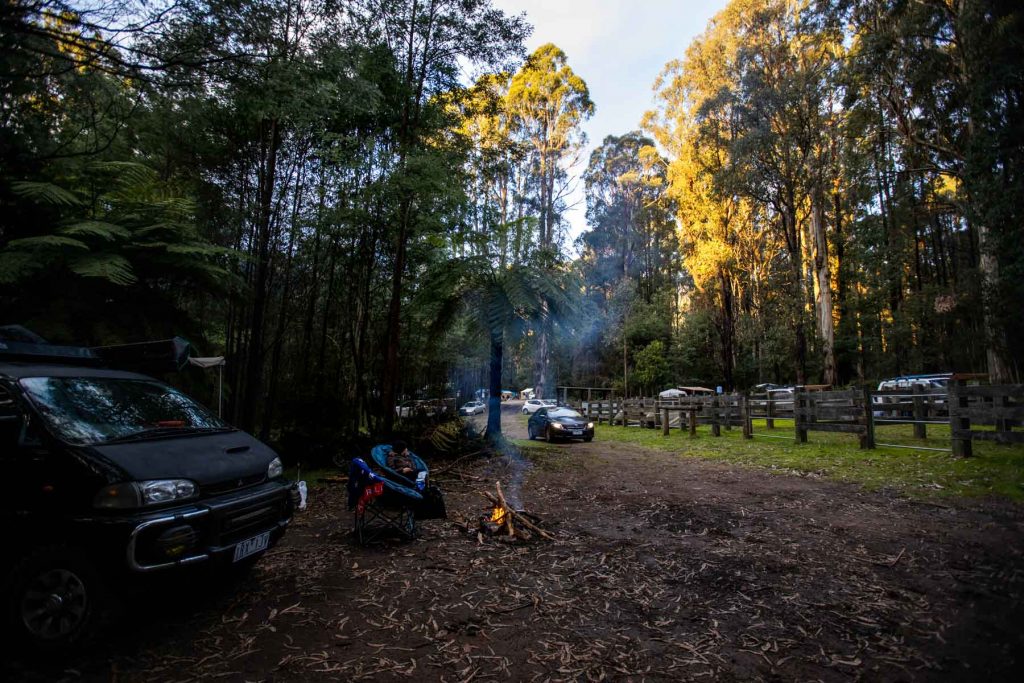
Meanwhile I can see two small pools of something on the floor of the van. As I’m contemplating whether it’s mud or blood, I look down and see a giant slug, or is it dirt, on my hand. I flick it off with a small squeal and it lands on Adrian’s shoe.
As he bends down to flick it outside, he takes a proper look at it.
“It’s a leech,” he says.
“Look at this,” I say, pointing to a red spot on my jeans on my left calf. “Where has this blood come from?”
“Looks like the leech has had its fill of you.”
I pull up my trouser leg and sure enough there’s blood still coming out of my leg. The leech had had its dinner, I hadn’t felt a thing, and when he’d had enough, he’d let go and crawled on.
I have no idea how he made his way up to my hand, where I eventually flicked him off and on to Ade’s shoe.
Our bed is cosy and almost comfortable. The seat that we had been sitting on rolls out to form a King size single bed, enough room for us both to sleep in, but only just.
It turns out the zip on my sleeping bag is damaged and I can no longer zip it up. We know it’s mine, even though we have exactly the same sleeping bags, bought them at the same time and they zip together, we know it’s mine because Ade keeps his in a space saving bag that shaves about five centimetres off the length of his rolled up sleeping bag. He’s not giving his up, but he does let me sleep on the inside of the van – so generous.
Despite the dodgy zip and the fact that it’s almost winter in Melbourne and the temperature has dipped to almost zero, I manage to stay warm in the van, but we both spend the night tossing and turning. Turns out the mattress is a little hard after a while and we have to keep turning over so we don’t get too sore on any one side.
In the morning the temperature doesn’t rise much above the overnight low. I flick the kettle on and wait the 45 minutes for it to boil while we get breakfast ready.
Ade goes for a walk to investigate the camp ground in the day light, while I sit down to read my book in one of the large tub chairs.
When he comes back, he suggests a walk so we both wander off to investigate the camp ground. A young kid rides past on a mini trail bike, his parents anxiously chasing after him.
“Brake, brake,” his mum yells, while his dad and his mates look on proudly.
We come across a sign informing us of the start of a walk to Marysville. 4.9km. So, we figure we might as well head into town.
The narrow track winds through thick brush, in the distance we can hear the unmistakeable laughter of a kookaburra and another bird, that we can’t quite place.
We round a corner, cross a fallen log, pass an ants’ nest and a wombat hole and then, overhead, we see two rare black cockatoos sitting in the tall trees. Three more fly in, we watch as they move from tree to tree making a loud distinctive cackaw sound as they fly.
Of course, Ade has brought the wrong lens with him, so we stop to appreciate the wildlife, without the pressure of photographing them, and Ade doesn’t even complain.
It takes us about two hours to walk to Marysville, we cross five roads and meander up and down hills.
In Marysville the town is busy, the coffee shop is closed so we grab a meat pie for lunch and sit outside to eat. We buy lollies and English Breakfast tea from the lolly shop and then spy another coffee shop, open this time, so stop in for a huge cup of tea and a coffee.
We get chatting to the owner, who tells us the town’s been busy over the past couple of weeks. But prior to that, it was depressingly quiet when Australia was in lockdown due to COVID.
He recommends some places for dinner but when we tell him we’re camping, and we’re where staying he goes quiet for a moment.
“That’s a long walk,” he says. “And it’s all uphill from here. If I was about to finish, I’d drive you back, but I can’t leave yet.”
It’s a lovely offer, but the whole point is for us to get out and walk, get some exercise and see the sights along the way.
We thank him and start the long trek back up the hill, stopping along the way to pick up dry bits of wood. But by the time we get back the ground is damp and Ade struggles to make a fire. He asks a family that’s stopped nearby and has a roaring fire going if he can have a Firestarter. They don’t have any. They’ve been staying in Marysville and just dropped by the campground to make a fire, but they come over and give Ade a hand, collecting dead fern fronds and loading them on to our fire pit.
When the fire eventually sparks, we sit down to watch the flames dance to the sound of the dance music that’s started from the new campers who have moved in beside us.
We spend hours watching the fire, throwing on more timber, moving around the circle away from the smoke, getting closer when we get cold, moving away as we heat up. And by nine o’clock we’re ready for bed.
That’s the thing about camping. It always feels like time moves so slowly. Everything takes so much longer than it usually does, and is so much more difficult than it would be at home. There is nothing to do but savour the experiences, embrace the slowness and enjoy being outside in the fresh air.
I realise I spend a lot of time inside, even more now during coronavirus as we’re forced to work from home and visiting people is restricted.
But this little respite has revived my spirits and given me just a taste of adventure once again.
Join AllAbroad on Facebook, Twitter and Instagram for more travel chatter.
Yum cha, history and giant escalators in Hong Kong
We’ve never been to Hong Kong, we know it’s a severe oversight on our behalves considering how close it is to Australia, but luckily for us guest traveller Jack Walden has. In our latest You’ve Been Where post Jack points out the highlights and tells us why we really should make it a priority. Oh, and he also reminds us why it pays to do your research.
Who are you and what do you do for a living?
I’m Jack Walden, the CEO of a company called the c word (c for communications consultancy, so stop wondering and start chuckling) and a contributor to travel website Journeys to Come by Catriona Rowntree.
Where is home?
When I’m travelling I can make myself at home anywhere: hotels, airport lounges and planes. When I’m not travelling, home is chilly Melbourne.
Where have you been? When did you go?
I want to share a recent trip to Hong Kong. I’ve been twice in the past couple of years – both times in the middle of the year. And am hoping to head back in the next 12 months.
Who did you travel with?
I went with a friend I’ve been travelling with for years. We met up with another friend who had recently moved there from Melbourne. I had been raving on about the city for months before taking the trip and I couldn’t wait to show it off to my friend. It was also great to have a friend who was willing to be a tourist in her own city and be our personal tour guide.
What were the highlights of your trip?
The dim sum, the lights and the greenery! My favourite meals included traditional Cantonese flavours at Duddell’s; delicious yum cha at Maxim’s Palace and a delicious dinner served with a side of history in the Bank of China building at the China Club.
The light show is also a great attraction – you can see it from the Avenue of Stars along the Hong Kong Harbour for free or you can choose one of the restaurants on Kowloon and get dinner with a view. We nabbed a great view (and a great dinner) at Hutong, and went back for night two with drinks and a light show from the rooftop bar at the Peninsula.
The other highlight was the amazing green spaces in the CBD including the Asia Society Hong Kong Center and Victoria Peak with several incredible walking tracks. There are also plenty of green spaces on the outskirts of the city. We took a cable car up to the Big Buddha and less than 30 minutes from the city I felt like I was in a completely different country.
Oh, and the escalator! You need to spend a couple of hours exploring the upper levels of Hong Kong and its eclectic mix of bars and restaurants using the world’s longest outdoor escalator.
What did you least like about your trip?
The heat. I do love Hong Kong, but for a person who LOVES the cold, the humidity took a little getting used to. The rooftop pools help!
Do you have any funny stories from your travels?
Too many to share. One that comes to mind from this particular trip was arriving at Hong Kong airport thinking we could fly to Shanghai for a couple of days on a 72 hour transit visa. The catch: you have to be ‘transiting’ somewhere other than the place you’ve come from.
It pays to do your research. Thankfully the staff were amazing and were able to change our flights to fly straight back to Melbourne – and the silver lining: we scored an extra three days in Hong Kong!
What were the locals like?
Everyone is very friendly and eager to help. They’re also very busy! Life in Hong Kong is lived at triple the speed of life anywhere else. But it’s brilliant!
What was the food like?
It was a highlight. There’s something for everyone with the flavours of the world at your doorstep. We enjoyed amazing dim sum, sensational seafood and delicious degustations.
Did you learn anything about yourself or the world on this trip?
I love cities!
Would you recommend others travel here?
Hong Kong has something for everyone: shopping, food, nature, views, ferries … and the list goes on. It’s also really easy to explore either by foot or by taxi. And there’s a great mixture of new Hong Kong sitting alongside old Hong Kong.
Do you have any tips for people thinking of travelling here?
- Give yourself an extra day in the city by checking your bags in for your flight at the train station in the city. Yes, you can check them in the morning of your flight and then spend the day exploring.
- Pack an extra bag for the bargains you’ll no doubt want to bring home.
- Choose a restaurant or bar to gain an unparalleled view of the famous Hong Kong light show.
- Hong Kong is the perfect destination for a long weekend – you can arrive for a late dinner and depart after a full day in the city.
Love travel? Join us on Facebook, Twitter and Instagram for more travel chatter.
Vung Tau – a city of layers
I’m sitting on a beach gazing out over a small island. A light drizzle is falling around me, but I’m not sure whether it’s the rain, or seaspray coming off the ocean.
In front of me, next to the island, a huddle of boats are stationed in the water, while a lone boatman fights against the waves to row his small timber boat out to meet them.
But I’m not here to see them. I’m here, with my sister Julie, to try and get a glimpse of Mieu Ba Temple, a small temple in the middle of Hon Ba island.
We’re in Vung Tau, Vietnam, for two nights for the magazine that I’m guest editing for a month. Here to check out the major sites and write an article on the city.
And this temple is not your usual temple.
Sometimes referred to as Lady Temple, the temple was built by fishermen in honour of the Goddess of the Sea.
You can only access the temple when the tide is out, revealing a rocky path to cross to the island, so make sure you check with your hotel when the best time to visit is.
Sadly we missed the crossing – it was early, apparently, very early – and there are no boats on the shore to take us to the island, so our views are limited to watching and imagining from the mainland.
As the closest beach to Ho Chi Minh City, Vung Tau is a popular spot for weekend getaways.
And it’s a city full of surprises.
“The people from Ho Chi Minh just come to the night markets, they come with their ice boxes, buy their fish and get out,” one local expat tells me.
While another tells me two days isn’t possibly long enough in Vung Tau.
“There is so much to see, you need at least a week,” he says.
I had researched the city before I left Ho Chi Minh, of course, had scoured websites to find out the best the coastal city had to offer, and was left with an impression that Vung Tau was a small seaside village with just a smattering of interesting attractions.
And yet what I found, as I explored the city for two days, was a large city centre with a vast array of sights to visit.
Perhaps what surprised me most about Vung Tau was the many layers of the city. Just when I think I’ve got it figured out, have got my bearings and think I’ve made note of all that there is to see, I discover more.
We are staying at the Wind Boutique Resort, midway between front beach and back beach, but inland and midway up Small Mountain. The hotel provides a free shuttle to the major sights and will come and pick you up when you’re finished. If you don’t have a local phone, the hotel will even lend you one so that you can contact them if you need to. The resort is lovely, as is its sister hotel, Wind hotel, just around the corner, and its currently undergoing renovations for expansion. We stayed a night in each so got to compare the two.
Jay, the hotel manager tells me that as well as extra villas, they’re adding a rooftop swimming pool to better capture the views at the Resort.
Our first stop in Vung Tau, after arriving by ferry late afternoon, is front beach where we watch the locals brave the rocky waters. We walk the six kilometres around to back beach, identifying bars and cafes, temples and tourist spots along the way.
Back beach, the more popular swimming beach of the two is full of tourists making the most of the last of the daylight hours and we watch as the sun sets over the Pacific ocean.
The following day we are up early for a full day of sightseeing.
Our first stop is Quan the Am Bo Tat, the Pagoda of Avalokitesvara Bodhisattva, a striking temple that sits on Tran Phu Street, the main road that follows the coast around Vung Tau, and overlooks the ocean.
Immediately inside the ornate gates is a giant statue of Avalokitesvara Bodhisattva standing on a lotus. The contrast between the stark white statue and the colourful pillars and walls of the temple is striking.
From the temple we make our way to the cable car and head up to check out the city’s largest and most heavily spruiked tourist attraction – Ho May Park. Ho May is part hotel, part amusement park and part ecotourism resort. Sitting on top of a hill, the resort includes a waterslide park, a temple of national heroes, religious temples, a zipliner, rollercoaster, dodgem cars, magic shows. The list is endless and while some are starting to look a little dated, you just never quite know what you’re going to stumble across next.
The next stop on our list is located just near the base of the cable car – Bach Dinh or White Palace.
The White Palace was built in 1898 as a summer villa for the Indochina –French Governors. The building, which sits on a hill overlooking the ocean – again it’s located on Tran Phu Street – is a classic French building and is surprisingly small for a palace. But it’s a stunning building, set amidst lush tropical grounds. Inside is a smattering of antique furniture and an interesting display of Chinese artefacts collected from a shipwreck in Cau Islet.
Perhaps one of the most notable and popular attractions in Vung Tau though is the Tuong Dai Chua Kito Vua – Christ the Redeemer; a 32 metre high statue of Christ that sits atop Little Mountain and overlooks the city. It is six metres smaller than it’s counterpart in Rio, but still very impressive.
We climb the 811 steps up the side of the mountain – there is no vehicle access – past crisp white statues of Jesus’s disciples as well as a couple of tourist gift shops and food outlets.
The statue is just visible from the road below, above the tree-line on Little Mountain, but it’s only by climbing all those steps that you get the full experience of this imposing statue.
From the Christ statue it’s just a short walk across the road and along the beach to Hon Ba, but as we gaze down from the roadside we note that the tide is in, again.
After watching the sunset over the island we make our way to the night market. A single road sells trinkets and toys for children, while all around stall after stall offers fresh seafood for purchase or for dinner. It’s worth a visit, just for the spectacle.
Vung Tau is an interesting mix of expat bars and local restaurants, of religious temples and giant religious statues – as well as Christ the Redeemer there is a giant Buddha – of lovely beaches and sunsets and crowded city streets.
And be sure to go by boat, to start the coastal feeling before you even arrive in this charming city.
Like this post and want to use it for your own guided tour of Vung Tau? You can now access this post offline through GPSmyCity. Just go to this link to download it. For a small cost you can even download the story with GPS coordinates so you know exactly where to go! It’s kind of like having a map, a Lonely Planet guide and a travel buddy in your pocket.
(Note: If you do upgrade to the full version we will receive a small fee from the overall cost which helps us maintain this blog.)
*This article first appeared in AsiaLIFE magazine, where I was guest editor for a month.
Fast facts
We stayed at the Wind Boutique Resort and the Wind Hotel.
We were here for two nights.
Was it long enough? Two nights was a great amount of time to spend here, however there was still more of Vung Tau I would have liked to have seen so I could definitely have stayed another couple of nights just to chill out. Plus, next time I’m definitely going to get out to the Hon Ba!
Highlights: The seafood at the night market, gazing out over the Hon Ba and imagining what’s inside, passing time in the many bars and cafes where the locals are all very friendly.
Join AllAbroad on Facebook, Twitter and Instagram for more travel chatter.
Seoul: a modern, progressive city with heart
Ever wondered what it would be like to travel to Seoul in South Korea? So have we! In the latest in our You’ve Been Where series guest writer Chris Mano takes us on a quick tour of this fascinating city. It’s probably not what you think. Warning, you’ll probably be feeling hungry after reading this post!
Who are you and what do you do for a living?
My name is Chris Mano and I’m from Melbourne, Australia. I’m an Account Manager for an IT company here in Melbourne.
Where is home?
I’ve lived in the eastern suburbs of Melbourne all my life, growing up in Mooroolbark and spending the last 11 years in Hawthorn. ‘The Bark’ will always be home, but living close to the city where I work and play is the practical choice.
Where have you been? When did you go?
I recently spent some time in Korea for the 2018 Winter Olympics. I spent two weeks based in Seoul and commuted via high-speed train out to Pyeongchang for the days I was attending Olympic events.
Who did you travel with?
This was a solo trip. I’m a very independent traveller and enjoy meeting people along the way. Some of my closest friends I have are people I’ve met when travelling around the world.
What were the highlights of your trip?
I do love a country that is modern and progressive but doesn’t forget its past and traditions. There’s so much technology on show and in use across Seoul, but people still have time for the little courtesies and respect of one another even though life is so fast paced. Young people hiring and wearing traditional dress on weekends, visiting the ancient palaces and gardens where kings and emperors once lived, this all really stood out to me.
What did you least like about your trip?
It’s so damn dry! I dried up like an old leaf. After a few days my skin really dried up and started to go red and crack, but a visit to The Bodyshop and a large tub of body butter fixed that up.
Do you have any funny stories from your travels?
Not really, it was a pretty straightforward trip. That said, my electric clippers didn’t work in Korea, so I had to visit the hotel barber a couple of times whilst I was there. Trying to explain you want your head shaved and beard trimmed to a barber and his assistant who spoke not a single word of English was quite humorous at times. Lots of pointing and making funny clipper like sounds.
What were the locals like?
Good bunch of people them Koreans, I really got along with everyone and had no issues even though the level of English knowledge is pretty average. The hotels were ok, but if you stopped at a shop, café or restaurant people struggled to understand what I was asking. If you looked like a lost tourist standing in the street with your map people would often come by and offer assistance.
What was the food like?
The food was always of a high quality wherever I ate. Whether it was a street stall or a fine dining establishment, the quality of the ingredients and preparation was superb. The standouts for me were the spicy fried chicken, Korean bbq and a chicken dish where they cook a small chicken, stuffed with ginseng in some broth and serve it to you in a bowl with a variety of sides like Kim chi, very yummy and healthy. Many cafes and restaurants have English and Korean menus, the pictures make it easy to point at what you’re after. Similar to Melbourne and our coffee culture, I noticed Koreans, especially the younger generation, like to go out for coffee and cake (and post it on Instagram).
Did you learn anything about yourself or the world on this trip?
Absolutely, I learnt about the Korean War and all the history between Korea, China and Japan over the centuries. After purchasing a 3D printed figurine of myself I also learnt I need to get fit.
Would you recommend others travel here?
Yes, absolutely. All the mod cons you would expect as a traveller, a nation with a rich history, fashion everywhere you look, great food and very nice people. What more do you want?
Do you have any tips for people thinking of travelling here?
If you want to spend time in museums learning history then I’d stay near Seoul Station or City Hall as it’s close to the museums and palaces. If you’re after shopping, fine dining and all the trends, I’d stay down in Gangnam. I covered most areas pretty extensively, but spent a bit of time on trains and in taxis getting across town as Seoul is quite a big city.
Been somewhere recently? We’d love to hear about it. Drop us a line or leave a comment below.
